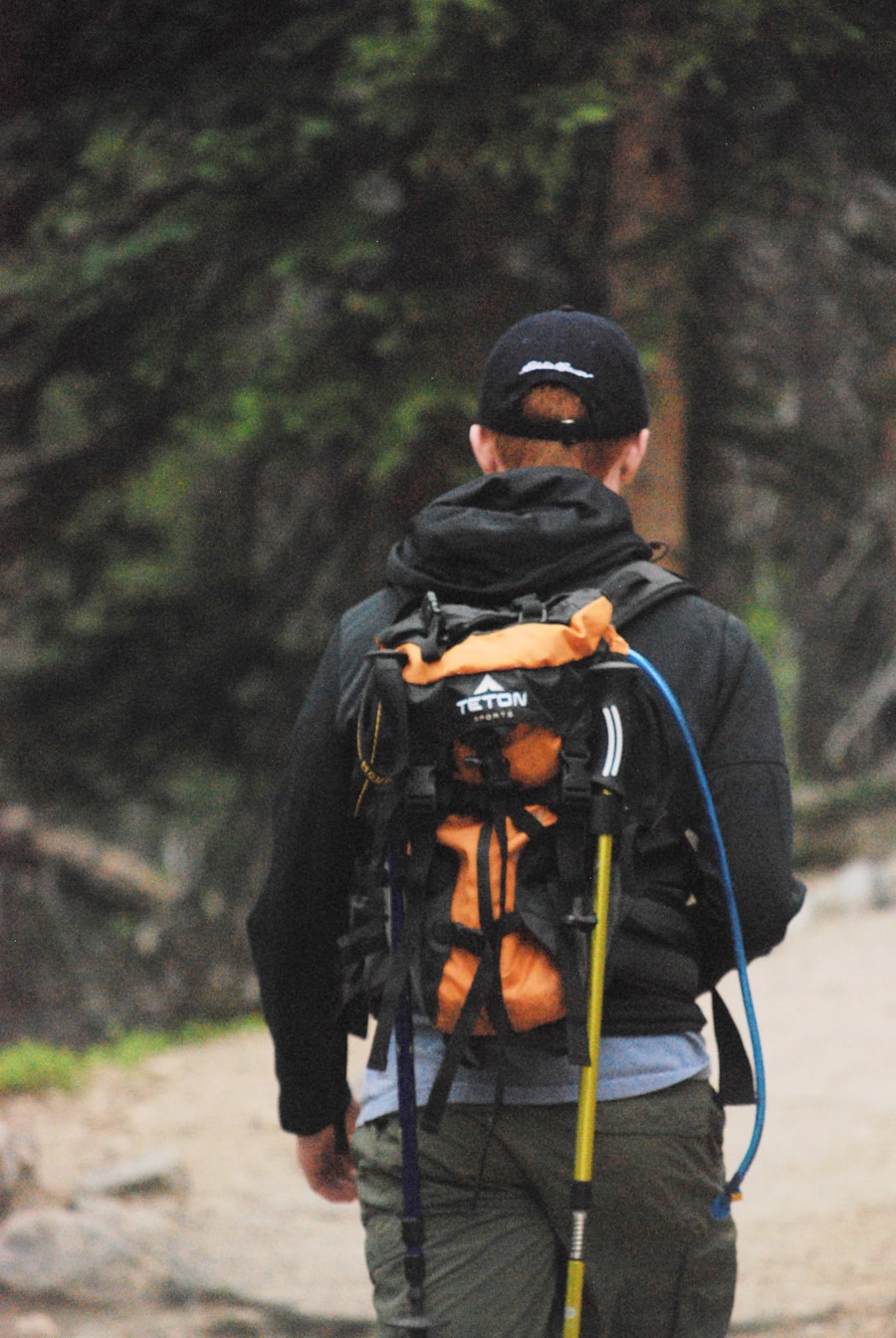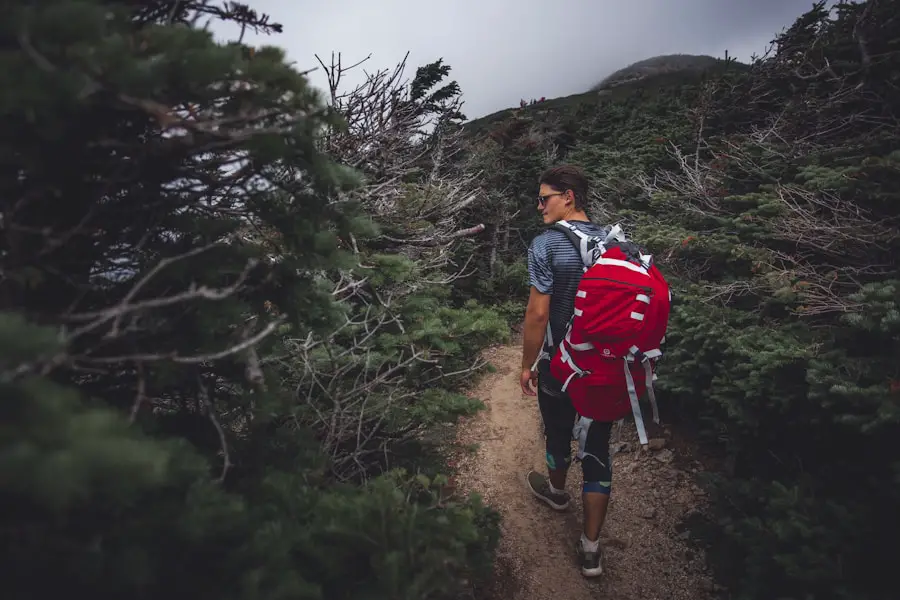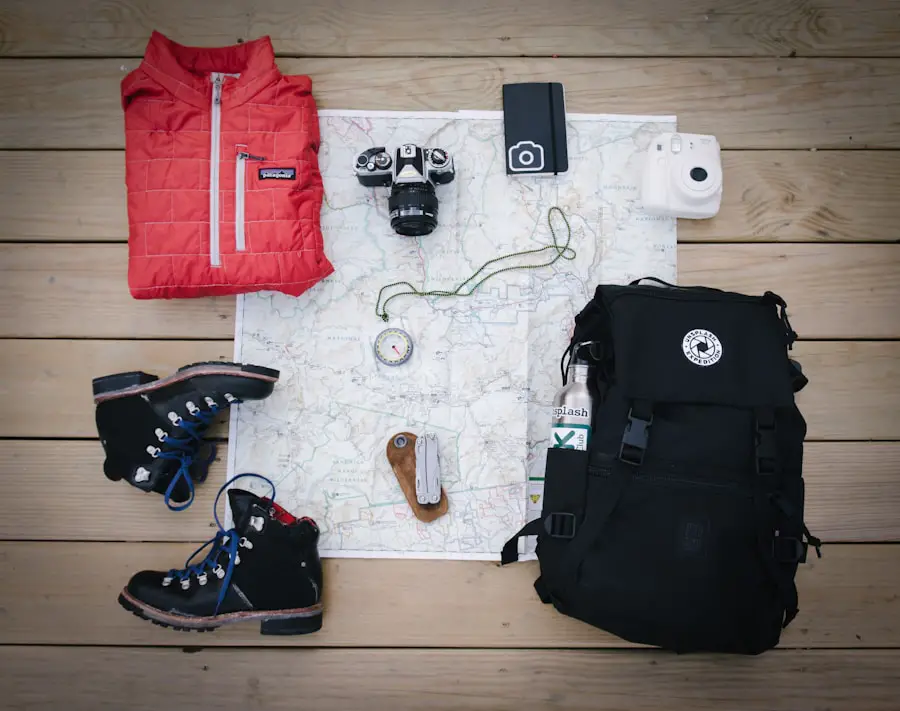Selecting the appropriate day pack is a critical first step for any outdoor adventure, whether it’s a day hike, a nature walk, or a city exploration. The right pack should not only accommodate your gear but also provide comfort and ease of movement. When considering size, a day pack typically ranges from 15 to 30 liters, which is sufficient for carrying essentials without being cumbersome.
A pack that is too large can lead to unnecessary weight and bulk, while one that is too small may not hold all the necessary items. It’s essential to assess the duration of your outing and the type of gear you’ll need to carry. For instance, if you plan to hike for several hours and require extra layers or food, a larger pack may be more suitable.
In addition to size, the design and features of the day pack play a significant role in its functionality. Look for packs with adjustable straps and padded back panels to ensure comfort during extended wear. Ventilation is another important factor; packs with mesh back panels can help reduce sweating and increase airflow.
Consider pockets and compartments as well; external pockets can provide easy access to frequently used items like water bottles or snacks, while internal compartments can help keep your gear organized. Some packs even come equipped with hydration reservoirs, allowing you to sip water without stopping. Ultimately, the right day pack should feel like an extension of your body, allowing you to focus on your adventure rather than your gear.
Key Takeaways
- When choosing a day pack, consider the size, fit, and features that best suit your needs and activities.
- Navigation tools such as a map, compass, GPS, or smartphone with GPS capabilities are essential for staying on track during outdoor adventures.
- A well-stocked first aid kit should include items for treating cuts, scrapes, blisters, sprains, and other common injuries.
- Stay hydrated on the trail by carrying an adequate amount of water and considering a hydration system or water purification method.
- Pack nutritious snacks and meals to fuel your body during outdoor activities, and consider dietary restrictions and preferences.
Navigation Tools
Understanding Topographic Maps
A topographic map provides detailed information about the landscape, including elevation changes, trails, and landmarks. Familiarizing yourself with reading these maps is essential; understanding contour lines and symbols can significantly improve your ability to navigate effectively.
The Importance of Compasses
In addition to maps, a compass is an indispensable tool for outdoor navigation. It allows you to orient yourself and determine your direction relative to the map. Learning how to use in conjunction with a map is a valuable skill that can prevent disorientation in dense forests or mountainous areas.
Technology and Backup Plans
For those who prefer technology, GPS devices offer real-time location tracking and can often store multiple waypoints for easy navigation. Smartphone apps like AllTrails or Gaia GPS provide trail information and user-generated content, making them excellent resources for hikers. However, it’s crucial to remember that technology can fail; therefore, carrying a physical map and compass as backups is always wise.
First Aid Kit

A well-stocked first aid kit is an essential component of any outdoor excursion, as it prepares you for potential injuries or emergencies that may arise during your adventure. The contents of a first aid kit can vary based on the length of your trip and the number of people in your group, but certain items are universally important. Adhesive bandages in various sizes are crucial for treating minor cuts and scrapes, while sterile gauze pads and adhesive tape are necessary for more significant wounds.
Antiseptic wipes or solutions should also be included to clean injuries before applying dressings. In addition to basic wound care supplies, consider including items for specific situations you might encounter. For instance, if you’re hiking in an area known for insect activity, having antihistamines or hydrocortisone cream can help alleviate allergic reactions or insect bites.
Pain relievers such as ibuprofen or acetaminophen are also beneficial for managing discomfort from strains or headaches. If you’re venturing into remote areas, it may be wise to include a splint for immobilizing fractures or a thermal blanket for hypothermia prevention. Regularly check your first aid kit to ensure that supplies are not expired and that everything is in good condition before each trip.
Water and Hydration
| Metrics | Data |
|---|---|
| Recommended daily water intake | Approximately 3.7 liters for men and 2.7 liters for women |
| Percentage of body weight that is water | Average of 60% |
| Dehydration symptoms | Thirst, dry mouth, fatigue, dizziness, and dark urine |
| Benefits of staying hydrated | Improved physical performance, better cognitive function, and regulation of body temperature |
Staying hydrated is paramount during any outdoor activity, as dehydration can lead to fatigue, dizziness, and impaired physical performance. The amount of water you need depends on various factors such as temperature, humidity, altitude, and the intensity of your activity. As a general guideline, aim to drink about half a liter of water per hour during moderate activity in moderate temperatures.
However, this amount may need to be adjusted based on individual needs and environmental conditions. When planning for hydration on a day hike, consider how you will carry and purify your water. Many day packs come with hydration reservoirs that allow you to sip water through a tube without stopping.
Alternatively, carrying water bottles is also effective; ensure they are durable and insulated if you prefer cold water. In areas where water sources are available, portable water filters or purification tablets can be invaluable for ensuring safe drinking water. Always scout out potential water sources along your route beforehand and plan accordingly; knowing where you can refill can help manage your hydration strategy effectively.
Nutrition and Snacks
Proper nutrition is essential for maintaining energy levels during outdoor activities. Packing the right snacks can make a significant difference in how you feel throughout your hike or adventure. High-energy foods that are lightweight and easy to carry are ideal choices.
Trail mix, which typically combines nuts, seeds, dried fruits, and sometimes chocolate or granola, provides a balanced mix of carbohydrates, protein, and healthy fats that can sustain energy levels over time. In addition to trail mix, consider including energy bars or protein bars that are specifically designed for outdoor activities. These bars often contain concentrated nutrients that can provide quick energy boosts when needed.
Fresh fruits like apples or bananas are also excellent options; they are hydrating and provide natural sugars for energy. If you’re planning a longer hike, consider packing a sandwich or wrap made with whole-grain bread and protein-rich fillings like turkey or hummus. Remember to balance your snacks with hydration; salty snacks can help replenish electrolytes lost through sweat but should be consumed alongside adequate water intake.
Extra Clothing and Protection from the Elements

Weather conditions can change rapidly in outdoor environments, making it essential to pack extra clothing that provides protection from the elements. Layering is key; wearing multiple layers allows you to adjust your clothing based on temperature changes throughout the day. Start with a moisture-wicking base layer that helps keep sweat away from your skin.
This layer should be followed by an insulating layer such as fleece or down that retains body heat without adding excessive bulk. An outer shell layer is crucial for protection against wind and rain. Look for jackets made from breathable materials that offer waterproofing without trapping moisture inside.
Additionally, packing an extra pair of socks can be a game-changer if your feet get wet; dry socks can prevent blisters and keep you comfortable throughout your hike. Don’t forget accessories such as hats and gloves; these items can provide warmth in cooler temperatures and protect against sun exposure in warmer weather.
Emergency Shelter
An emergency shelter is an often-overlooked but vital component of any outdoor gear list. Even on short day hikes, unexpected weather changes or injuries can leave you stranded or unable to continue your journey. A lightweight emergency bivy sack or space blanket can provide crucial protection against the elements if you find yourself needing to spend an unplanned night outdoors.
These shelters are compact and easy to carry but offer significant insulation against cold temperatures. In addition to bivy sacks, consider packing a lightweight tarp or emergency tent that can be quickly set up if needed. These shelters not only provide protection from rain but also create a barrier against wind chill during colder nights.
Familiarizing yourself with how to set up these shelters before heading out will save valuable time in an emergency situation when every minute counts.
Personal Items and Miscellaneous Essentials
Beyond the core items necessary for safety and sustenance during outdoor activities, there are several personal items and miscellaneous essentials that can enhance your experience. A multi-tool or knife is invaluable for various tasks such as food preparation, gear repair, or first aid applications. Additionally, carrying a headlamp or flashlight ensures you have visibility during early morning hikes or unexpected delays after sunset.
Personal hygiene items should not be neglected either; biodegradable soap and hand sanitizer are essential for maintaining cleanliness while minimizing environmental impact. Sunscreen is another critical item; even on cloudy days, UV rays can penetrate through clouds and cause skin damage during prolonged exposure. Insect repellent is equally important in areas where bugs are prevalent; applying it regularly can help prevent bites that could lead to discomfort or allergic reactions.
Lastly, consider bringing along a small notebook or journal to document your experiences during the hike. Not only does this serve as a creative outlet, but it also allows you to reflect on your journey and capture memories that may otherwise fade over time. By carefully selecting personal items and miscellaneous essentials tailored to your needs, you can ensure a more enjoyable and fulfilling outdoor experience.
If you’re looking for the perfect minimalist travel backpack for your hiking adventures, you might want to check out this article on 5 Must-Have Minimalist Travel Backpacks for Spring Adventures 2025. It provides great recommendations for lightweight and functional backpacks that are perfect for day hikes. Make sure to pack all the essentials mentioned in this article to ensure a successful and enjoyable hiking trip.
FAQs
What is a hiking day pack?
A hiking day pack is a small backpack designed to carry essential items for a day hike. It is typically smaller and lighter than a regular backpack, making it more suitable for shorter outdoor excursions.
What should I pack in a hiking day pack?
Essential items to pack in a hiking day pack include water, snacks, a map and compass, a first aid kit, a multi-tool or knife, extra clothing layers, sun protection (such as sunscreen and a hat), a flashlight or headlamp, and a whistle for emergencies.
How much water should I pack in a hiking day pack?
It is recommended to carry at least 2 liters of water per person for a day hike. However, the amount may vary depending on the length and difficulty of the hike, as well as the weather conditions.
What type of snacks are good for a hiking day pack?
Good snack options for a hiking day pack include trail mix, energy bars, dried fruit, nuts, and jerky. It’s important to pack lightweight, non-perishable snacks that provide a quick source of energy.
What should I consider when choosing a hiking day pack?
When choosing a hiking day pack, consider factors such as size, comfort, durability, and features such as hydration compatibility and organizational pockets. It’s important to choose a pack that fits well and can comfortably carry all the necessary items for your hike.
